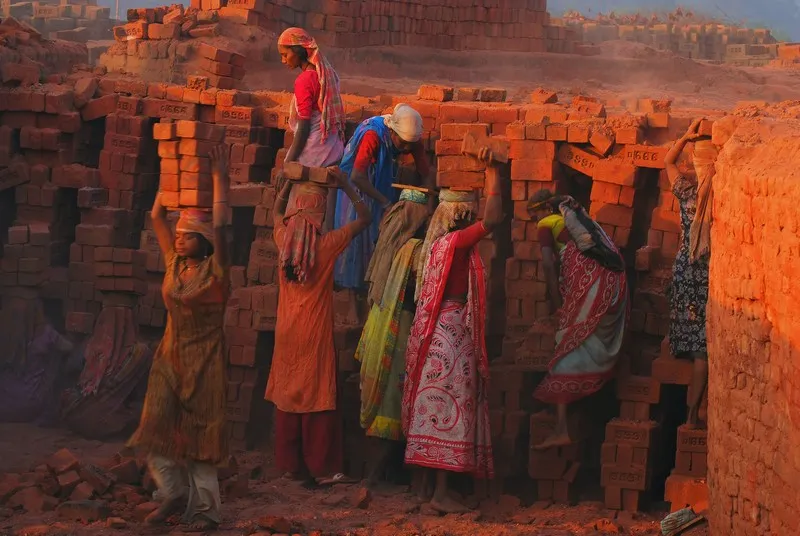Table of Contents
- The Historical Context of Labour Division
- Emergence of the New International Division of Labour
- Key Features of the New International Division of Labour
- Theoretical Perspectives on the NIDL
- Conclusion
The New International Division of Labour (NIDL) is a concept in sociology and global economics that captures the evolving nature of global labour distribution in the context of globalization. Historically, labour division was largely confined within national borders, with developed countries taking charge of manufacturing, production, and services, while less developed nations supplied raw materials. However, since the late 20th century, the rise of globalization, technological advancements, and shifts in the global economy have led to a restructuring of this division. In this new global order, labour is now increasingly outsourced to developing nations, while developed countries focus on high-skill, high-wage industries like finance, technology, and services. This article explores the underlying factors, consequences, and theoretical frameworks that help us understand the NIDL and its impact on global labour dynamics.
The Historical Context of Labour Division
Before delving into the NIDL, it is essential to understand the traditional division of labour that characterized much of the 19th and 20th centuries. During this period, industrialized nations, primarily in the Global North, dominated manufacturing and production. Countries such as the United States, Germany, and the United Kingdom were the industrial powerhouses that produced goods, machinery, and consumer products. In contrast, countries in the Global South—especially those in Africa, Asia, and Latin America—were relegated to providing raw materials such as cotton, oil, and minerals. This division of labour was highly hierarchical and asymmetrical, reflecting broader colonial and imperialist structures.
The traditional division of labour was deeply tied to imperialism. Colonizing nations exploited the resources of their colonies, ensuring that the latter remained dependent on the former for finished goods. This relationship not only shaped economic structures but also entrenched power inequalities between the Global North and Global South. While the Global North grew richer, the Global South remained in a state of underdevelopment, trapped in a cycle of resource extraction and dependency. This historical context laid the foundation for the shifts seen in the New International Division of Labour.
Emergence of the New International Division of Labour
The term “New International Division of Labour” began to gain traction in the 1970s as the global economy started to undergo significant changes. The traditional model of industrialized nations manufacturing goods and developing nations supplying raw materials was no longer sufficient to explain the increasingly complex nature of global trade and production. Several factors contributed to the emergence of the NIDL, reshaping the global labour landscape.
First, the rise of multinational corporations (MNCs) played a crucial role in the NIDL. MNCs began to move their production facilities to developing countries where labour was significantly cheaper. This outsourcing of production allowed these corporations to cut costs and increase profits, while the economies of developing nations were integrated into the global economy through industrial production. Countries such as China, India, Mexico, and Bangladesh became hubs for manufacturing, particularly in sectors like textiles, electronics, and consumer goods.
Second, advancements in transportation and communication technologies facilitated the NIDL. The development of container shipping, air freight, and the digital revolution made it easier and more cost-effective to move goods, services, and information across borders. This technological progress allowed MNCs to establish global supply chains, where different stages of production could take place in various parts of the world, depending on the availability of resources and the cost of labour.
Finally, neoliberal economic policies, which promoted free trade, deregulation, and the opening of national economies to global markets, encouraged the spread of the NIDL. Institutions such as the International Monetary Fund (IMF) and the World Trade Organization (WTO) pushed for policies that liberalized trade and facilitated the movement of capital and goods across borders. This created an environment where production could be relocated to countries with lower wages, fewer labour protections, and less stringent environmental regulations.
Key Features of the New International Division of Labour
Several key features characterize the NIDL, distinguishing it from the traditional division of labour.
Shift in Manufacturing Locations
One of the most significant shifts in the NIDL is the relocation of manufacturing industries from developed countries to developing countries. Nations like China, Vietnam, and India have become industrial powerhouses, producing everything from clothing to electronics for global markets. This relocation has allowed developed countries to focus on high-value-added sectors such as finance, technology, and services while shifting low-skill, low-wage work to developing nations.
This shift has resulted in the emergence of global production networks, where different stages of production are located in different countries. For example, a smartphone may be designed in the United States, its components manufactured in South Korea or Taiwan, and the final product assembled in China. These networks create complex interdependencies between nations, as goods often cross multiple borders before reaching their final destination.
Global Labour Market Polarization
Another key feature of the NIDL is the polarization of the global labour market. In developed countries, the shift away from manufacturing has led to a decline in middle-skill jobs, such as factory work, which has traditionally provided stable employment for the working class. Instead, these economies now rely on high-skill, high-wage jobs in sectors like finance, technology, and services. However, this shift has also contributed to growing inequality, as many workers in developed countries have struggled to transition into these new industries.
In contrast, developing countries have seen a surge in low-wage, low-skill jobs in manufacturing and assembly. While this has provided employment opportunities and contributed to economic growth, it has also led to the exploitation of workers, with many facing poor working conditions, low wages, and limited labour rights. The NIDL has, therefore, reinforced global labour hierarchies, where workers in developing countries are often employed in precarious and poorly paid positions, while workers in developed countries occupy higher-paying, more secure roles.
Feminization of Labour
A notable feature of the NIDL is the feminization of labour, particularly in developing countries. As manufacturing jobs have moved to the Global South, women have increasingly become a key source of labour in industries such as textiles, electronics, and apparel. Women in these industries are often employed in low-wage, low-skill positions, working in factories or sweatshops under difficult conditions.
This feminization of labour is often justified by the perception that women are more docile and easier to manage in the workplace. In many cases, women in developing countries are paid less than their male counterparts and are subject to exploitative practices such as long working hours, unsafe working conditions, and limited opportunities for advancement. Despite these challenges, women’s participation in the labour force has been a crucial factor in the economic growth of many developing countries, although it has also raised concerns about gender inequality and the exploitation of female workers.
Theoretical Perspectives on the NIDL
Get the full article AD FREE. Join now for full access to all premium articles.
View Plans & Subscribe Already a member? Log in.






